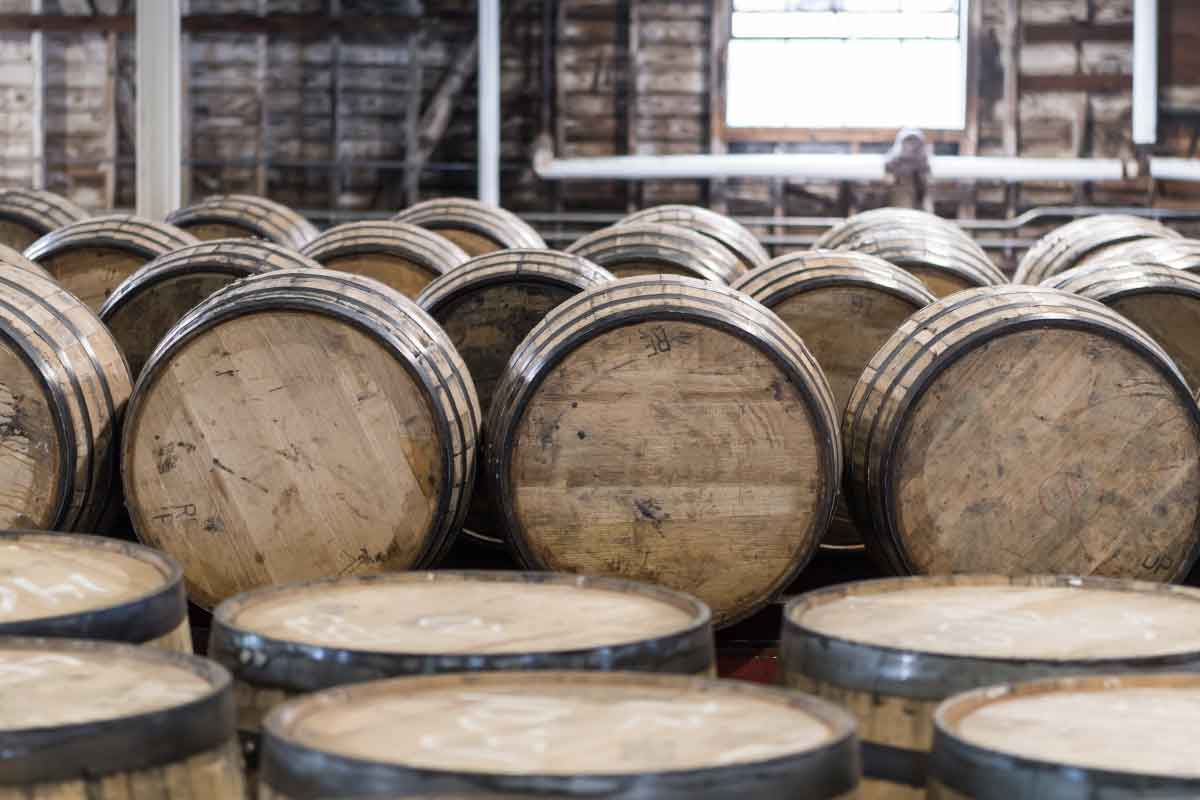The process of cask finishing a whiskey includes removing the spirit from the barrel in which it began its maturation process, and moving it into another barrel for a second stint within something new or different. While this has become an entirely expected common practice, that hasn’t always been the case. In fact, cask finishing is probably newer than you may be imagining.
The Beginning of Cask Finishing
Cask finishing, or secondary maturation, is something that’s only really been around for four decades. Dr. Bill Lumsden, now the director of distilling and whisky creation at Glenmorangie and Ardbeg, is commonly credited as one of its early practitioners and advocates. And by working with a sweeping range of high quality wine casks, and bringing those flavors to life across a number of releases, he’s certainly one of the major forces which helped to popularize cask finishing.

However, he wasn’t necessarily the first. That initial foray into secondary maturation, at least in the modern whiskey world, was made at The Balvenie by David Stewart, the distillery’s long-time master blender. In 1983, he spearheaded the release of Balvenie Classic, an expression which would later be rechristened as Balvenie DoubleWood, and just like that, the idea of cask finishing emerged.
The practice of finishing a whisky in a second barrel was at first slow to come around. But, as with all good ideas, a trickle turned into a torrent. Today it’s something that has taken on a life of its own, appearing in all whiskey categories. In fact, the practice has even branched off into other spirits. But that is a story for another day.
Sherry, Spirits, and More
Sherry casks are far and away the most common type of barrel used for finishing. In fact, the Scotch whisky industry’s usage of sherry casks — not only for finishing, but for complete maturation — largely kept the sherry industry afloat during its downturn.
Sherry, of course, is a fortified wine. But other fortified wines have become popular for cask finishing as well, including port and Madeira. Beyond fortified wine casks, regular wine casks are also used. In fact, some distilleries will highlight casks from particular varieties, regions, or well known producers. And casks which held other type of spirits can be used, too. That brings into play Cognac casks, peated whisky casks, rum casks, tequila and more. Beer? You bet ya. Cider? Why not! How about maple syrup or coffee that matter? If you can throw it into a barrel, the sky’s the limit.
Other Barrel Experiments
You don’t even have to put your whiskey into a new type of cask at all. In fact, certain producers have simply re-casked whiskey into a fresh rendition of the same barrel type. This is akin to shifting back into a lower gear to generate more power, more rapidly.
Searching for extra flavor straight from the casks themselves is more common now as well. In this case, distilleries might choose to finish a whiskey, for example, in virgin charred American oak casks. Or perhaps they’ll use virgin toasted barrels or virgin French oak, as opposed to American. Here, it’s the wood and the wood treatment that is the variable hard at work, as opposed to the product which previously called the barrel home.
Regulations
Irish whiskey more or less has carte blanche for whiskey maturation and finishing. In Ireland, any type of wood, not just oak, can be used. Bourbon and American whiskey producers enjoy broad flexibility as well. However, such finishes have to be properly denoted on a label. For instance, it’s not properly called just “bourbon” any longer, but rather, “bourbon finished in sherry casks.” Nevertheless, that product is still a bourbon even if its labeling must be amended.
While Scotch whisky has long been more rigid, a change to the category’s regulations a few years ago allowed for an increasing number of cask types to be deployed. Now oak casks that formerly held most spirits, wine and beer are allowed, except those made from or with stone fruits, or those which fruit or other flavorings or sweeteners were added after fermentation or distillation. Scotch regulations still broadly prohibit the use of cider casks, however. Also forbidden are casks not associated with the “traditional process for the alcoholic beverage concerned.” Therefore, casks used to age gin are also out.
The finishing process for whiskey could last for a day, or it could last for years. There’s no stipulation on how long a secondary maturation period can be. However, if the finishing period lasts as long as the initial maturation, or longer, it emerges as the more dominant force rather than the incorporation of a subtle new flavor or quality, which is truer to the original intention of the process.
Outliers Do Exist
Last but not least, it’s worth noting that even with how widespread cask finishing has become, not every distillery practices it. In fact, there are even some who are steadfastly against the idea. The mindset there is that it’s a popular way to mask poor spirit with an injection of new flavor. And by imparting those flavors rapidly, it’s a way to circumnavigate the tedious process of traditional maturation and shave years off a product’s age — not to mention years until the producer’s time to profit.
Of course, secondary maturation certainly may be used for such purposes. But there’s an abundance of well-made cask finished whiskeys on the market. The best ones follow the methodology for nothing more than simply delivering delicious drams, and putting interesting and unique spins on new releases.
Want to taste some cask finishing experiments?
With Distiller, you’ll always know what’s in the bottle before you spend a cent. Rate, Review, and Discover spirits. Head on over to Distiller, or download the app for iOS and Android today!
Want to enjoy Distiller ad-free? Join Distiller Pro today to support the Distiller platform and keep ads off of your screen.


